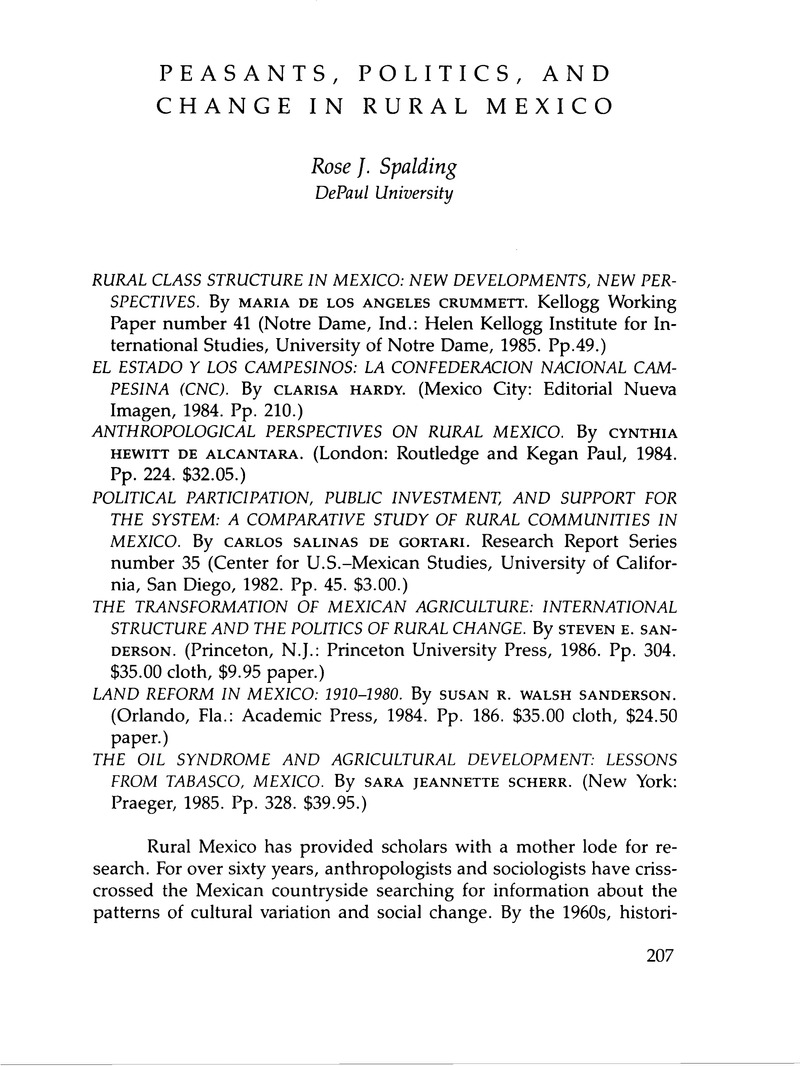No CrossRef data available.
Published online by Cambridge University Press: 12 October 2022

1. Manuel Gamio, La población del Valle de Teotihuacán (Mexico City: Talleres Gráficos de la Nación, 1922); and Arturo Warman, Ensayos sobre el campesinado en México (Mexico City: Nueva Imagen, 1980).
2. From Warman's Los campesinos: hijos predilectos del régimen (Mexico City: Editorial Nuestro Tiempo, 1972), as quoted on p. 165.
3. For example, I would argue that much of the work on inequality, including most of the studies by the Inter-American Committee for Agricultural Development, fits the dependency paradigm only very loosely.
4. In contrast, Steven Sanderson's first book, Agrarian Populism and the Mexican State (Berkeley and Los Angeles: University of California Press, 1981), focused heavily on Mexico's populist political legacy.
5. This outcome is particularly clear in the years preceding the implementation of the Sistema Alimentario Mexicano (SAM). See Sistema Nacional de Evaluación, “Comportamiento de la producción agrícola de 1952 a 1981 (análisis por sexenios),” internal report, 1982.
6. Hardy found that the experimental democratization of the CNC leadership selection process in Sinaloa at the end of the 1970s produced little enthusiasm at the base of the organization. Moreover, the leadership's recent effort to shift attention toward unionization and away from land was also found to be unsuccessful because of the rural workers' continued peasant aspirations and the general preference for the CTM, not the CNC, to serve in labor mediations. See Hardy, 55–70, 138–49.
7. This paper is drawn from his Producción y participación política en el campo (Mexico City: UNAM, 1980).
8. See Gabriel Almond and Sidney Verba, The Civic Culture (Princeton: Princeton University Press, 1965).